Cultivate Aromatic Basil At Home With These Tips From Master Horticulturists

HERBS > BASIL

Elizabeth is a Permaculture Garden Designer, Sustainability Consultant and Professional Writer, working as an advocate for positive change. She graduated from the University of St. Andrews with an MA in English and Philosophy and obtained a Diploma in Applied Permaculture Design from the Permaculture Association.
Reviewed By PETER LICKORISH

Peter is a Horticulture Lecturer and self-employed Horticulturist, with a passion for diverse areas of the industry - from garden design to the science behind plant growth and propagation. He has completed the Royal Horticultural Society’s Master of Horticulture (MHort) Award and lectures on RHS courses at Bedford College.
BASIL GUIDES
Basil is a popular and delicious herb to grow.
You can grow it in your garden for the summer or grow it indoors, but there are certain things you need to know in order to do so successfully.
In this guide, we’ll help you understand more about this useful culinary herb and give you the information you need to grow it at home.
Growing herbs like basil at home is a great way to start your gardening journey or to expand your gardening skill.
It can help you avoid the costs (both financial and environmental) of purchasing fresh herbs like basil in plastic from a supermarket or other store.
Overview
| Botanical Name | Ocimum basilicum |
| Common Name(s) | Basil |
| Plant Type | Herb / Annual |
| Native Area | Africa to South-East Asia |
| Hardiness Rating | H1C |
| Foliage | Deciduous |
| Flowers | White or pink |
| When To Plant | February to July |
| Harvesting Months | June to September |
Sunlight
Preferred
Full Sun
Exposure
Sheltered
Size
Height
0.1 – 0.5M
Spread
0.1 – 0.5M
Bloom Time
Summer
Soil
Preferred
Loam or sand
Moisture
Well-drained
pH
Any
Common basil, also known as great basil, has the botanical name Ocimum basilicum.
This is a culinary herb in the Lamiaceae family, which is native to the tropical regions of South East Asia.1Basil. (n.d.). Iowa State University. Retrieved March 13, 2023, from https://hortnews.extension.iastate.edu/1997/3-21-1997/basil.html
Plants called ‘basil’ also come from other species in the Ocimum genus.

Examples include Ocimum sanctum and O. americanum.
In the UK, most people are most familiar with O. basilicum, also known as sweet basil, and we’ll focus on this species for this guide.
However, you might be surprised to learn just how many different variants even of this type of basil are available.
Common Varieties
Exploring the nuance of different types of common basil is one of the great things about growing your own basil at home.

Here are some of the popular types and cultivars of basil with varying leaf colours and flavours to consider:
- ‘Cinnamon’
- ‘Crimson King’
- ‘Lettuce Leaf’
- ‘African Blue’
- ‘Thai Sita’
- ‘Floral Spires’
- O. basilicum var. minimum
- O. basilicum var. thrysiflora
- O. basilcum var. citriodora
How To Grow Basil
Growing Basil From Seed
Growing basil from seed is relatively easy.
Basil can be sown indoors from February or early March, or any time right up until July.
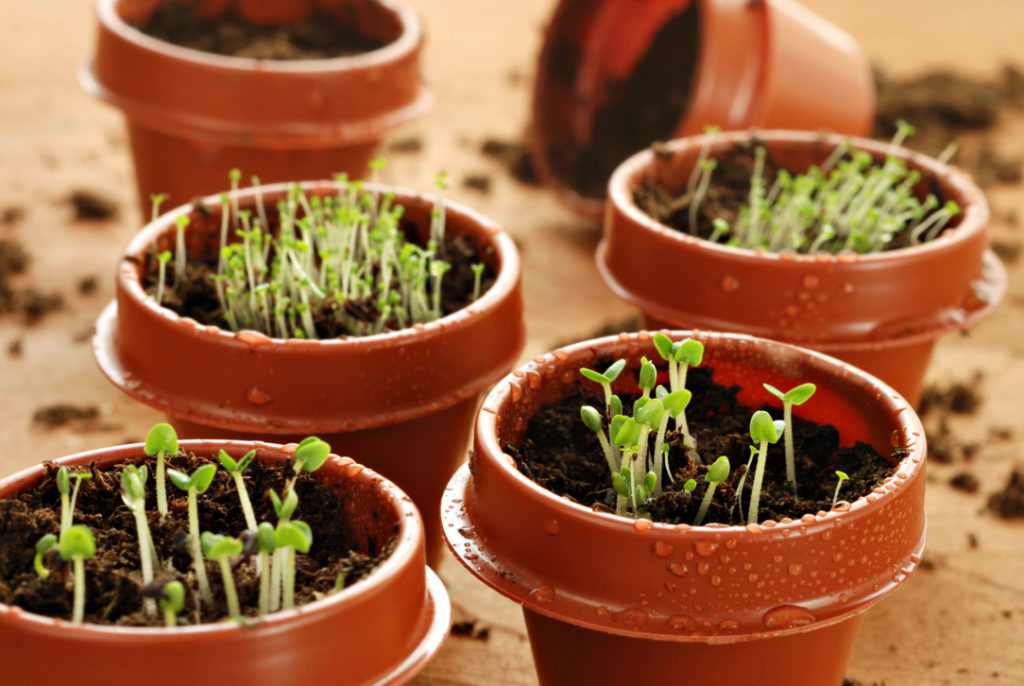
The seeds are sown into pots of peat-free potting mix, sometimes in a propagator when sown early, but usually on a light windowsill that is warm and without extreme temperature fluctuations.
Planting Out
You do not necessarily have to plant basil out in your garden.
In fact, basil is often best kept in a container and grown on a bright and sunny windowsill indoors.
Container growing is a good way to ensure that you can harvest your basil for as long as possible.
However, it is also well worthwhile to consider planting out basil in the garden, since as well as being a useful culinary herb, it is also a very useful companion crop, especially for tomatoes.

Where tomatoes can be grown outdoors or in a greenhouse successfully, you should get an annual crop of basil too.
“Strong aromas from basil reportedly help repel thrip pests, so not only do the two flavours mix well in the mouth, but they work well together in the garden,” explains Peter Lickorish, a Lecturer on Horticulture.
Basil should be planted out once all risk of frost has passed in your area, which is usually, unless growing undercover, from late May onward.
Make sure that you harden off your plants by slowly acclimatising them to the outdoor conditions before planting them in the ground or before placing containers outside full time.
Growing In Containers
Growing basil in containers is often the best option, as mentioned above, for gardeners in the UK.
But indoors or outside, you do have to make sure that you choose the right pots or containers, a suitable growing medium, and take care of your plants carefully.
“Compost should be peat free with good drainage, so consider adding perlite and make sure to break up any large lumps,” Peter suggests.
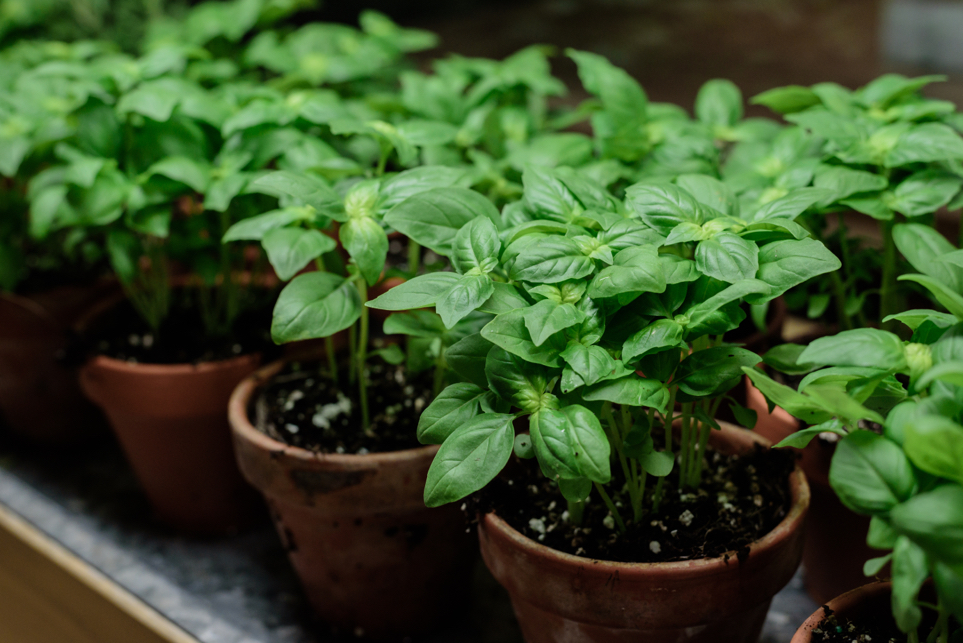
One downside to growing in containers is that you will have to water more frequently.
The smaller the container, the quicker it will tend to dry out.
“Terracotta pots, as well as being decorative, can retain and release some moisture back to the compost,” explains Peter.
Of course, you can grow basil on its own in smaller, individual pots, but one other option to consider is growing basil in larger containers alongside one or more other plants in a mixed herb pot.
Basil Plant Care
If you place basil in a suitable location, it should be relatively easy to care for.
Make sure that you consider the environmental needs and care basics outlined below to make sure that you are successful in growing these plants.
Light
Basil should be grown in full sun.
They will enjoy a spot on the south or west side of a raised bed with tomatoes, or a sunny spot on a patio or in a courtyard garden in a container.
In a container, in beds, or in the ground, they should thrive in a sunny spot that is sheltered from strong winds.
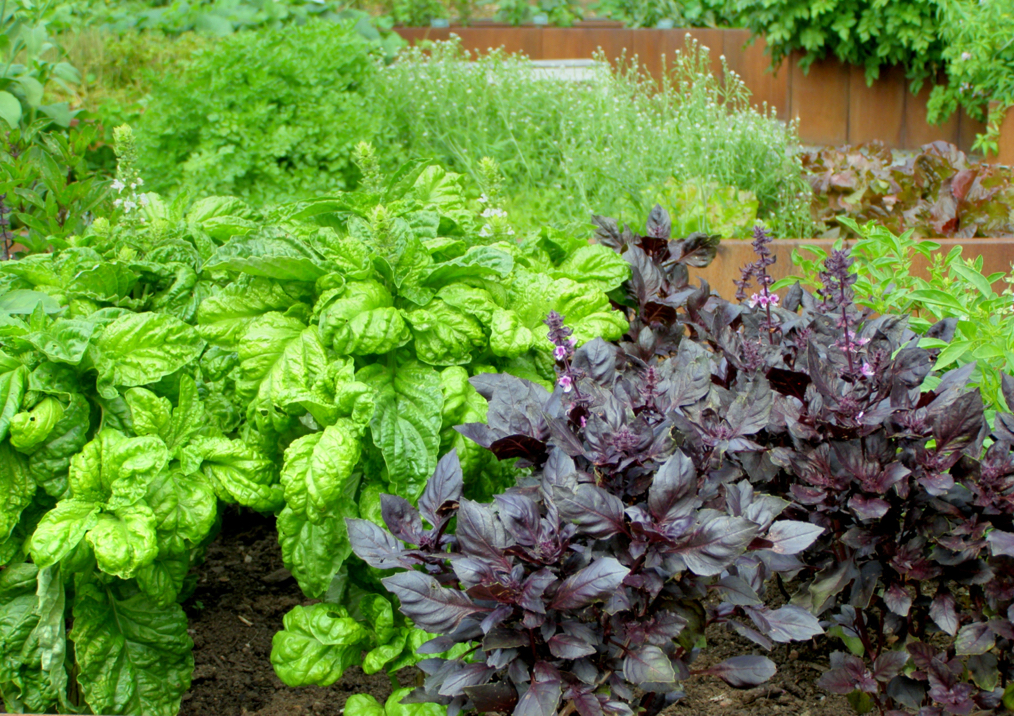
Indoors, you should be sure to place a basil plant in as bright and sunny a location as possible.
A south-facing windowsill is ideal.
Soil Conditions
Basil requires moist, but reasonably well-drained soil.
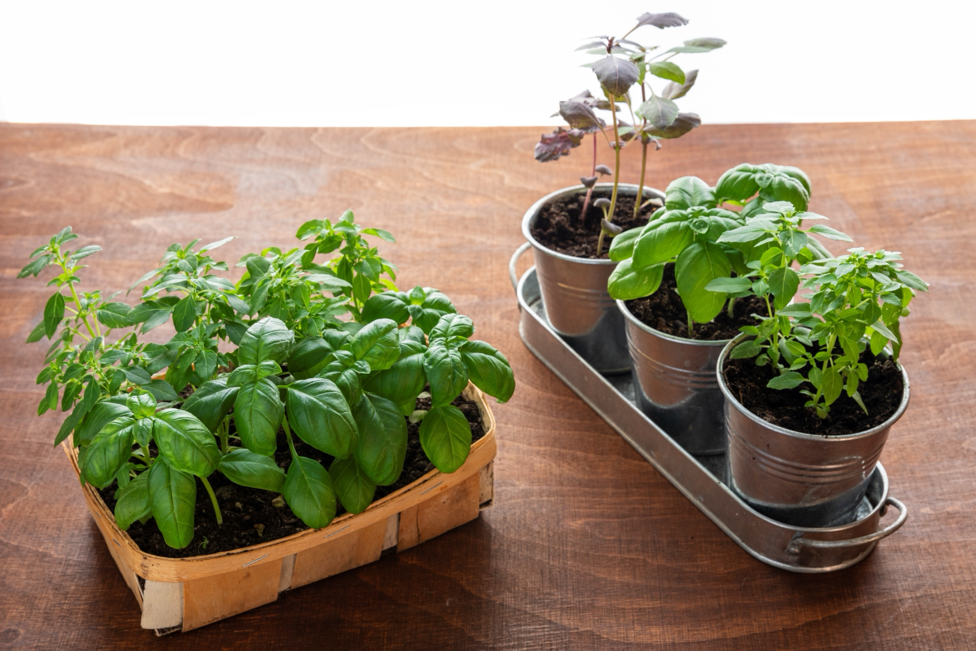
A kitchen garden bed used for other annual crops should provide the right conditions.
Preferred Climate
Basil is a plant native to the tropics.
It cannot withstand any frost at all and can only ever be grown outside in the UK over the summer months.
Its hardiness rating is H1C, so it can cope with temperatures down to around 5-10°C, but no lower.
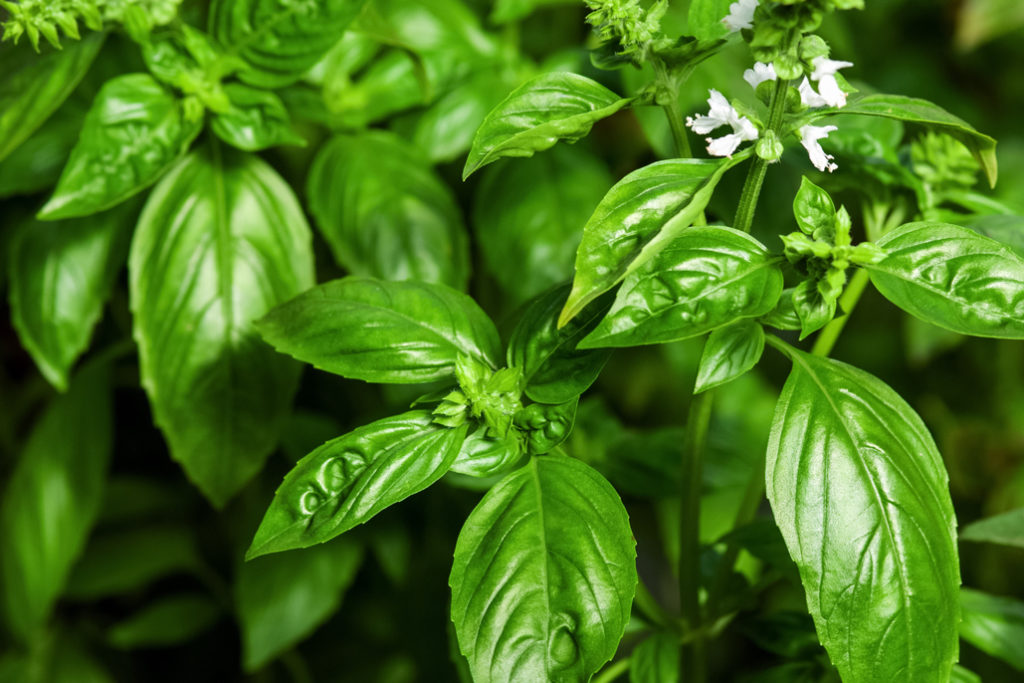
The more warmth you can give it, the better it will tend to grow.
Since basil likes warmth, providing a spot which is as protected and sheltered as possible is the key to success.
Watering, Humidity & Fertilising
Though the medium of soil should be free-draining, basil does like plenty of water and reasonably high humidity over the summer months.
Water well and regularly, but always make sure, especially when growing in containers, that excess water can drain away.
Try to water before mid-day if possible and try to water the soil at the base and not the leaves of the plant.
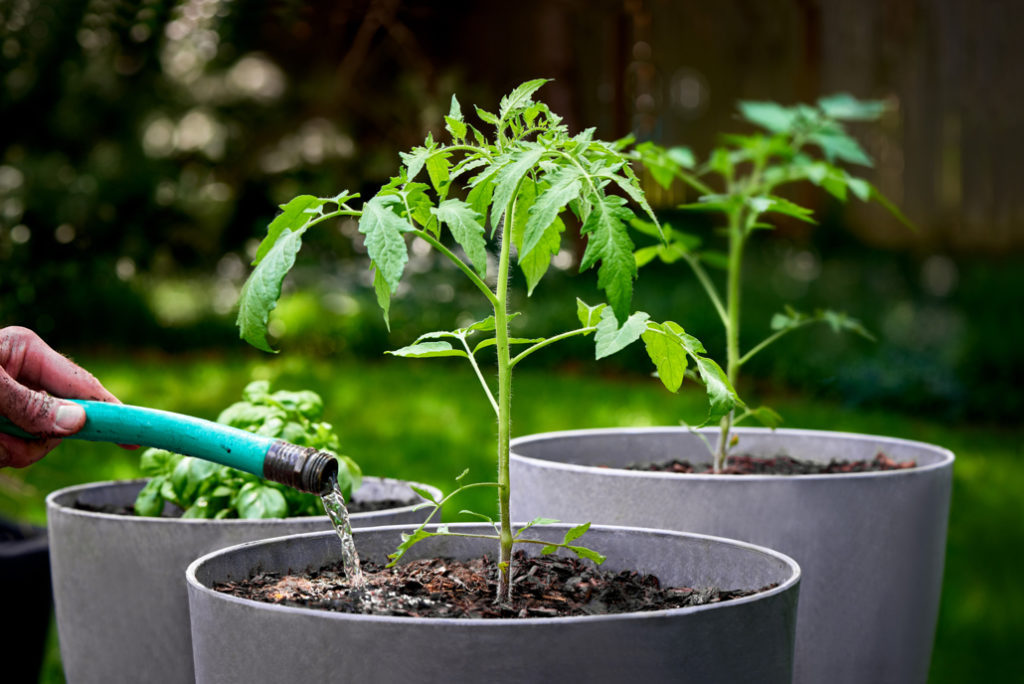
This can reduce problems such as powdery mould or mildew.
Mulching around basil with comfrey leaves or other organic mulches can help retain water and will also help meet the plants’ nutrient requirements.
Pruning
With basil, pruning and harvesting are one and the same.
Pick the leaves and tops off basil little and often through the summer months, from July to September outdoors, and through autumn and into winter if you are growing indoors, or move outdoors plants indoors before frosts threaten.
You can pick plenty, just be sure to leave at least three couples of side shoots so that regrowth can continue.
Pinching Out
If you are looking to maximise your yield of leaves for culinary use, you should pinch out the flowering heads as soon as these emerge to perpetuate leafy growth.
However, remember that there may be benefits in your garden to leaving some basil plants to flower.
They can attract pollinators and other beneficial insects and they can look beautiful too.
Common Pests & Problems
Slugs and snails can be a problem, as can leafhoppers, and aphids.
Companion planting and generally increasing biodiversity in your garden can help with pest control outdoors.
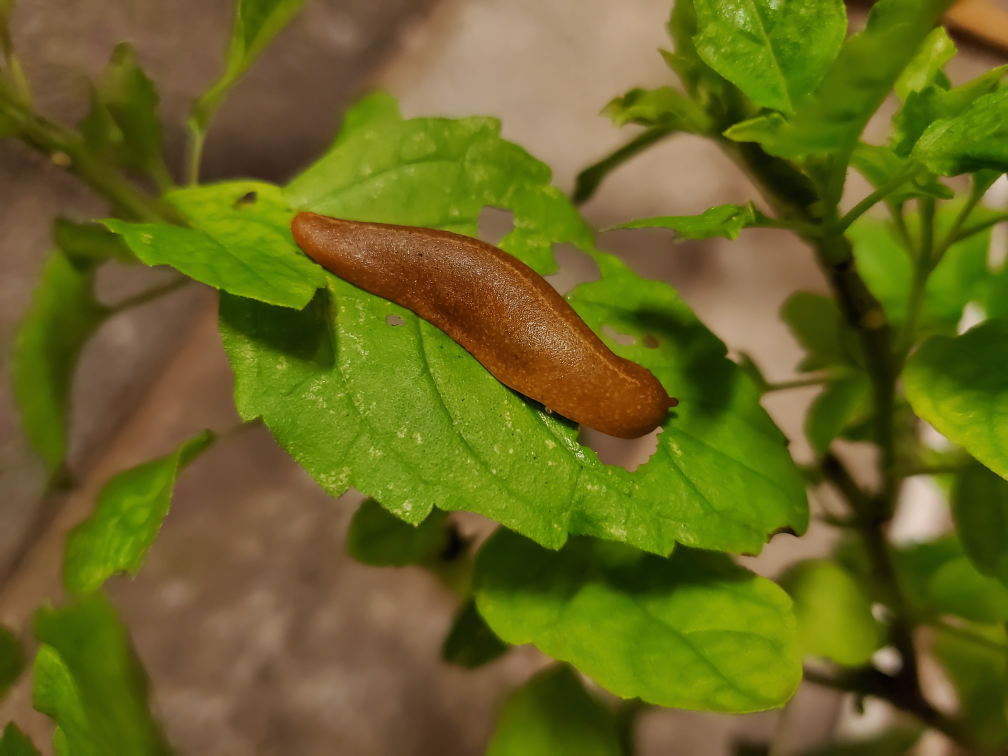
“Woodiness developing in stems and incorrect watering are among the most common problems,” Peter adds.
“Regular harvesting can prevent plants from becoming woody to maximise longevity.
“For watering, aim to hit the sweet spot between giving fast-growing plants the moisture they need and leaving them sitting in wet, sludgy compost.”
Companion Planting
Tomatoes don’t just like basil as a companion in the ground; they can work very well together in containers too.
Basil is also a good companion for peppers and aubergines.
Garlic or other alliums can also be beneficial as a companion for basil and these other crops, and marigolds are another great addition to polycultures that include these plants, helping to lure away aphids.
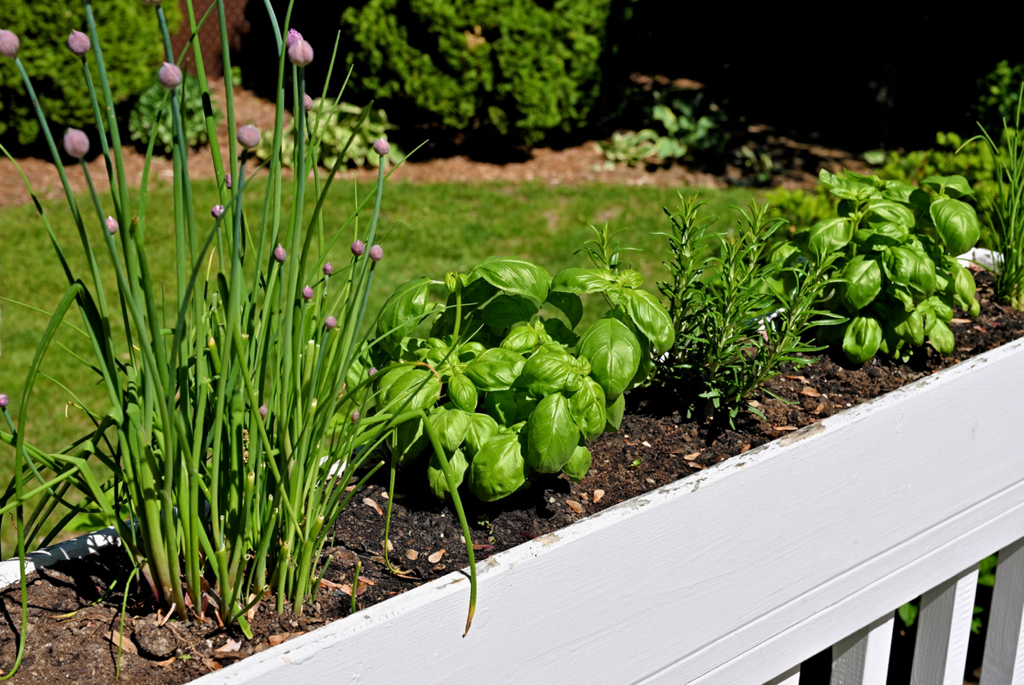
Basil can also work well in combination with other culinary herbs which like similar growing conditions.
Herbs to plant alongside basil include oregano and chamomile, which are said to help in the basil’s growth and flavour.
Parsley and basil can grow alongside one another too.
Borage, anise, bergamot, chicory, and coriander are some other herbs which can thrive in similar conditions.
Harvesting
Try to pick only what you need and either use or preserve it as quickly as possible.
Basil is really best fresh, but can also be frozen in cubes of water or olive oil, or dried for later use.
It’s important to note that harvested basil leaves should be stored unwashed until you need to use them, as they will turn slimy.
References
- 1Basil. (n.d.). Iowa State University. Retrieved March 13, 2023, from https://hortnews.extension.iastate.edu/1997/3-21-1997/basil.html
